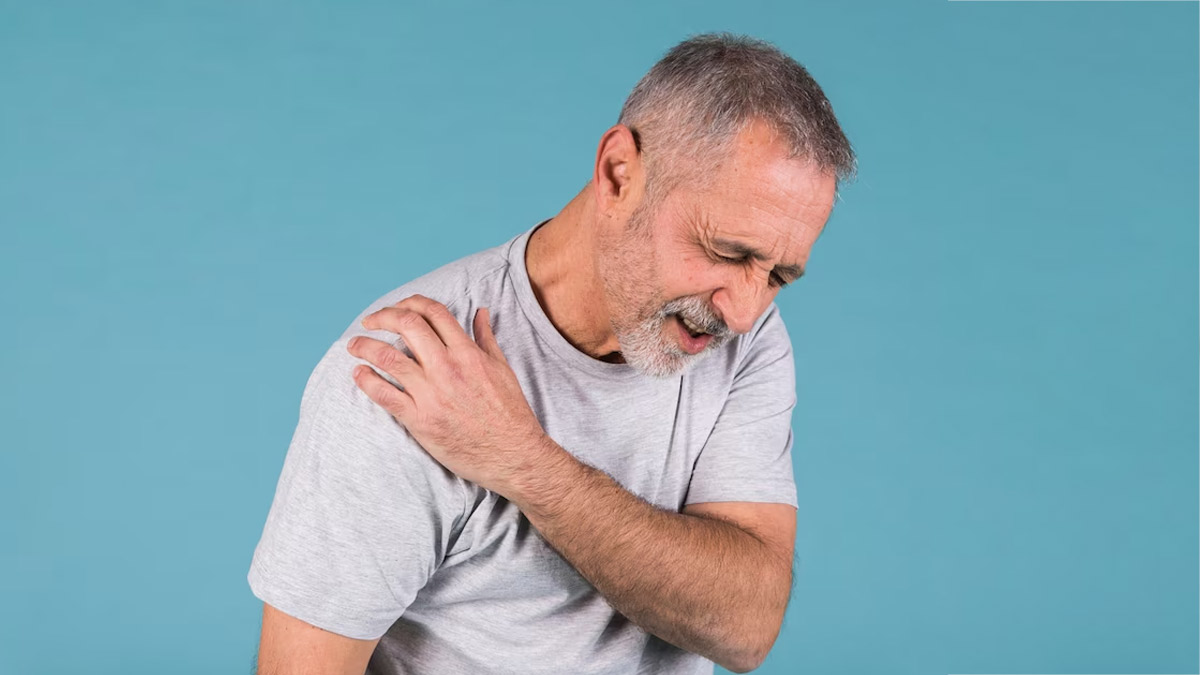
Muscle pain is a common symptom of viral fever. However, have you ever wondered how a virus causes this? Talking to the team of OnlyMyHealth, Dr Manjusha Agarwal, Senior Consultant, Internal Medicine, Global Hospitals, Parel, Mumbai, shared that this phenomenon is called Myalgia, and it is a result of the body’s immune response to the infection.
Table of Content:-
Muscle Pain During Viral Fever

“When the immune system recognises the presence of a virus, it releases various chemicals, including cytokines, to combat the infection. These chemicals can lead to inflammation in the muscles, resulting in pain and discomfort,” explained Dr Agarwal.
Although Dr Agarwal called myalgia a common symptom of viral infection, a clinical trial published in the Journal of Internal Medicine called myalgia ‘subjective,’ meaning that it manifests in different people differently.
But muscle pain, much like fever need not only be caused by the body’s immune response. “The virus itself may directly invade muscle tissues, causing further irritation and soreness,” added Dr Agarwal.
Muscle Pain Persisting Post Viral?
However, one concerning trend that has been growing in the last few years, is that this muscle pain still persists even after a person has recovered from a viral infection. According to Dr Agarwal, there can be several reasons for this:
- Firstly, the inflammatory response initiated by the immune system may take some time to subside. This prolonged inflammation can contribute to persistent muscle discomfort.
- Secondly, the virus may leave behind residual damage to the muscle tissue, and the body's healing processes can extend beyond the resolution of the infection itself.
- Lastly, general fatigue and weakness that often accompany viral infections can also contribute to continued muscle soreness.
Tips to Recover from Muscle Pain Post-Viral

Dr Agarwal shared that recovering from post-viral muscle pain requires a combination of rest, gentle exercise, and supportive measures. She listed:
- Allow your body sufficient time to recover. Rest is essential to prevent overexertion and to give the muscles an opportunity to heal. However, complete inactivity may worsen stiffness, so gentle movements and stretches are beneficial.
- Hydration is key in the recovery process. It helps flush out toxins, aids in muscle repair and contributes to overall well-being.
- Including anti-inflammatory foods in your diet, such as fruits, vegetables, and omega-3 fatty acids, can further support the body's healing mechanisms.
- Physical therapy or massages may provide relief by promoting blood circulation and reducing muscle tension.
- Over-the-counter pain relievers, under the guidance of a healthcare professional, can also be used for short-term relief.
- Gradual reintroduction of exercise is crucial for rebuilding strength and flexibility. Start with light activities like walking or swimming, and gradually increase intensity as tolerated. Warm up before exercise and cool down afterwards to prevent further muscle strain.
Also Read: Should You Self-Medicate If You Have A Fever: Doctor Shares Do's And Don'ts
Dr Agarwal concluded on the note that if your muscle pain persists or worsens after recovering from a viral infection, consult a healthcare professional to rule out any underlying issues. They can provide tailored advice based on your specific circumstances and may recommend additional interventions to promote a full and efficient recovery.
Also watch this video
How we keep this article up to date:
We work with experts and keep a close eye on the latest in health and wellness. Whenever there is a new research or helpful information, we update our articles with accurate and useful advice.
Current Version